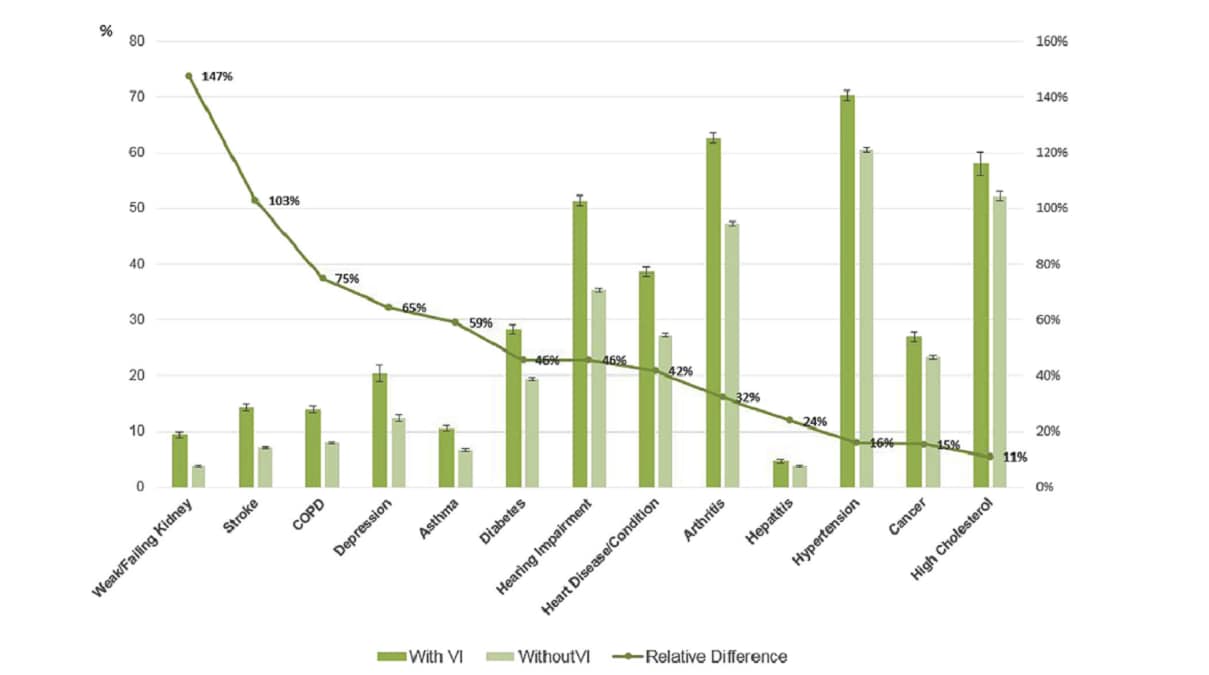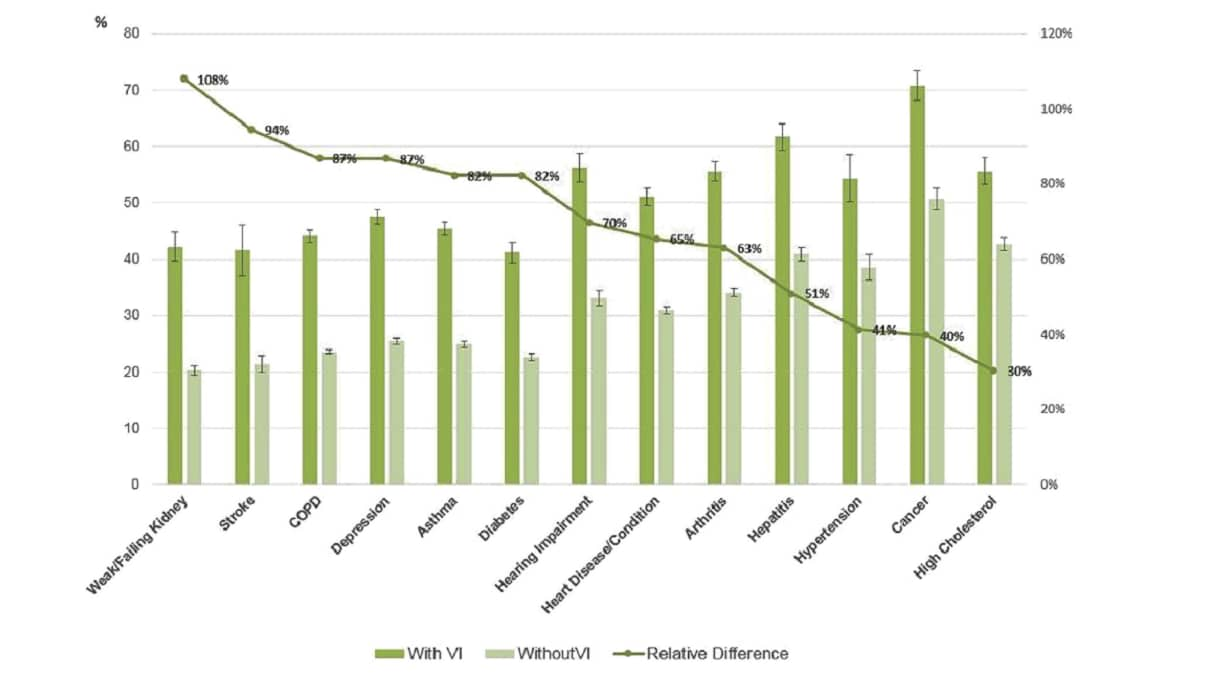Key points
Chronic health conditions are more common among older adults with vision impairment. Because of the aging U.S. population, the public health burden of vision impairment and chronic diseases is expected to increase.

About vision impairment and chronic conditions
A recent CDC study showed that 13.6% of national survey respondents aged 65 years or older reported vision impairment. People with vision impairment are also more likely to report having chronic conditions than people without vision impairment. Vision impairment with additional chronic disease among older adults can have a negative effect on overall health, ability to perform tasks, and social participation.
Table 1. Association Between Chronic Conditions and Vision Impairment Among People Aged 65 Years or Older, 2010–2014, National Health Interview Survey
Chronic Condition
Unadjusted Model Odds Ratio for VI vs no VI (95% CI)
Adjusteda Model Odds Ratio for VI vs no VI (95% CI)
Hypertension
1.5 (1.4-1.7)
1.4 (1.3-1.6)
Heart disease
1.7 (1.6-1.8)
1.6 (1.5-1.8)
High cholesterol
1.3(1.1-1.5)
1.3 (1.1-1.5)
Stroke
2.2 (1.9-2.5)
2.0(1.7-2.3)
Arthritis
1.9 (1.7-2.0)
1.7 (1.6-1.9)
Asthma
1.7 (1.5-1.9)
1.6 (1.4-1.8)
Cancer
1.2 (1.1-1.3)
1.2 (1.1-1.4)
Weak/failing kidney
2.7 (2.3-3.1)
2.3 (2.0-2.7)
Diabetes
1.6 (1.5-1.8)
1.6 (1.4-1.7)
Hepatitis
1.3 (1.0-1.5)
1.3 (1.1-1.6)
Depression
1.5 (1.3-1.9)
1.5 (1.2-1.8)
Hearing impairment
2.0 (1.8-2.1)
1.9 (1.7-2.1)
COPD
1.9 (1.7-2.1)
1.6 (1.4-1.9)
CI = confidence interval; COPD = chronic obstructive pulmonary disease; VI = vision impairment.
a Adjusted for age, sex, race, education, body mass index, smoking, and physical activity.
Source: Crews, J. E., Chou, C. F., Sekar, S., & Saaddine, J. B. (2017). The Prevalence of Chronic Conditions and Poor Health Among People With and Without Vision Impairment, Aged≥ 65 Years, 2010–2014. American journal of ophthalmology, 182, 18-30.
Prevalence of chronic conditions among people with vision impairment
The differences in the prevalence of chronic conditions among people with and without vision impairment ranged from 11% higher for high cholesterol to 147% higher for weak or failing kidneys among those with vision impairment.

Self-reported health with vision impairment
People with vision impairment and chronic conditions had a higher prevalence of fair or poor health compared to people without vision impairment. The differences ranged from 30% among people with high cholesterol to 108% among people with weak or failing kidneys.

Additional findings
Findings from this and other studies show that poorer health is associated with chronic conditions among older people with vision impairment. The higher prevalence of chronic conditions among people with vision impairment has important implications, for example:
- Vision impairment may hinder stroke rehabilitation.
- The size of the text in educational materials used in chronic disease management programs might be too small for people with vision impairment.
- Vision impairment, combined with hearing impairment, may lead to a misunderstanding of instructions from medical providers.
- People with vision impairment are less likely to access resources and medical care. This is especially true for people with lower health literacy, from certain racial or ethnic groups, and with lower socioeconomic status.
The findings of this CDC study suggest that further research is needed to better understand the relationship between visual impairment and related chronic conditions. This research should include a focus on health disparities. Better information will support development of better interventions, to reach populations at higher risk.
- Crews JE, Chou CF, Sekar S, Saaddine JB. The prevalence of chronic conditions and poor health among people with and without vision impairment, aged ≥65 years, 2010-2014. Am J Ophthalmol. 2017;182:18-30. doi:10.1016/j.ajo.2017.06.038
